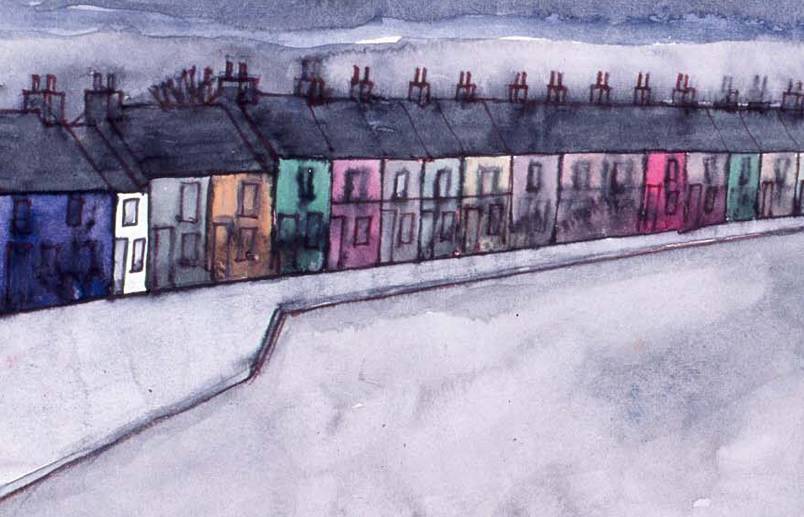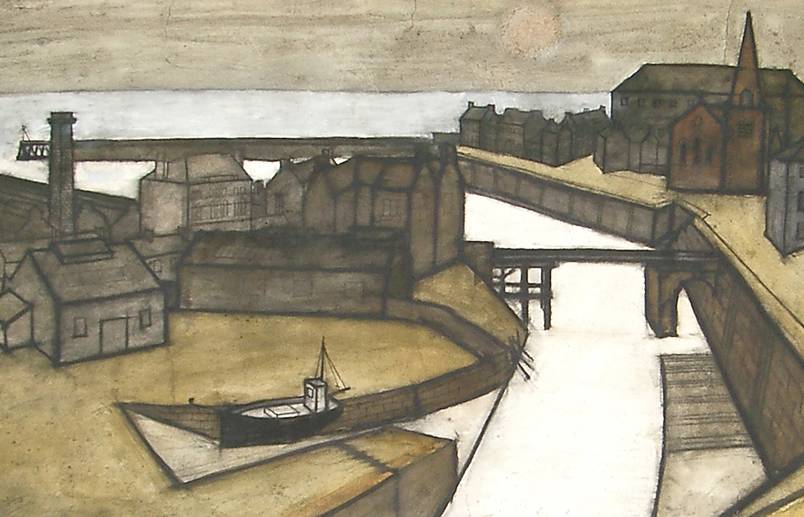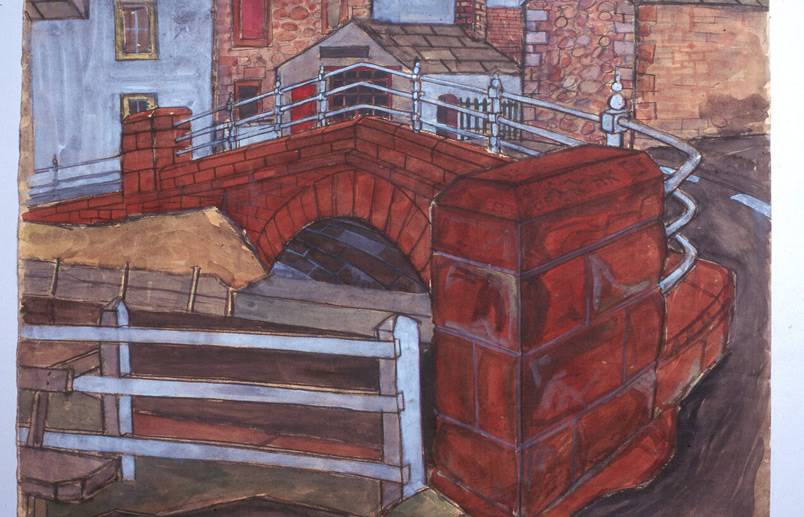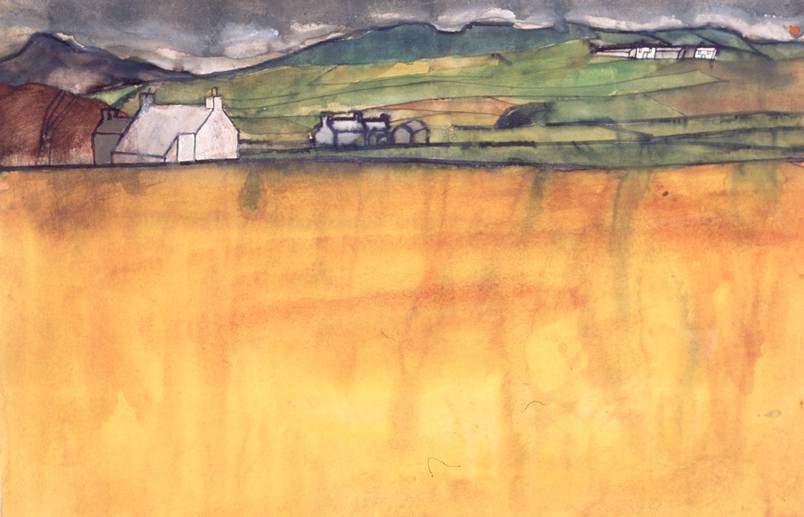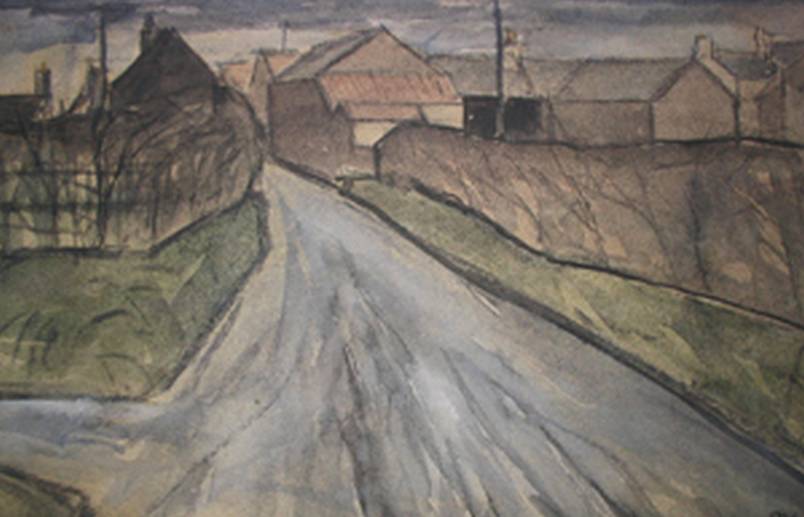Percy Kelly - History
Percy Kelly was born in 1918 at 113 Corporation Road Workington. His family were poor. His father Oscar was a Manxman carpenter; his mother Martha was a Scot. He was one of seven children (a twin) living in a small terrace house with Martha’s father Hugh. It was a devoutly religious household.
He could draw as soon as he learned to hold a pencil. Until the age of eight he lived close to the docks in Workington and he wandered freely, drawing boats, engines, trains, cranes and clumps of flowers. In 1928 when he was 10 the family moved to Salterbeck a few miles south of the town centre but still on the coast and within reach of Harrington harbour which he drew and painted. It was then that he began to walk longer distances inland and discovered the western edge of the English Lake District. However the pretty and conventional didn’t interest him. He always returned to the strong black lines and dark vistas of the coast, the mining villages, pit heads and railway lines. Once at school his father was approached several times by teachers who advised his son should go first to grammar school and then to art college. In the economic circumstances this was impossible.
Throughout his life his extraordinary talent was quickly noticed. His ability to draw gained the attention of Sir Winston Churchill, Lord and Lady Webb, Lord and Lady Eccles, Sir Nicholas Sekers, Princess Margaret and her husband Anthony Armstrong Jones and many more. Important people befriended him and tried to help him. Prestigious galleries pursued him but few succeeded in nailing him down to exhibit – Andreas Kalman at Crane Kalman in London: Mike Goldmark at Goldmark Gallery in Rutland: The Stone Gallery, Newcastle upon Tyne: Geoff Green at Tib Lane Manchester: Agnews of Bond Street and many more failed. He was 48 when his patron Sir Nicholas Sekers gave him his first exhibition at Rosehill Theatre and then at his showroom in Sloane Street. Lady Fermoy at her Gallery in Kings Lynn and Mary Burkett at Abbot Hall in Kendal were the only others to succeed but then only once. He was difficult to deal with, vacillated, cancelled and constantly changed his mind about what he was prepared to exhibit or sell. His marvellous friend and correspondent of his last 10 years, Joan David arranged a private exhibition at the house of her friends in Troutbeck in 1984 to pay the alimony on his second divorce. These few exhibitions were undertaken reluctantly and through necessity.

